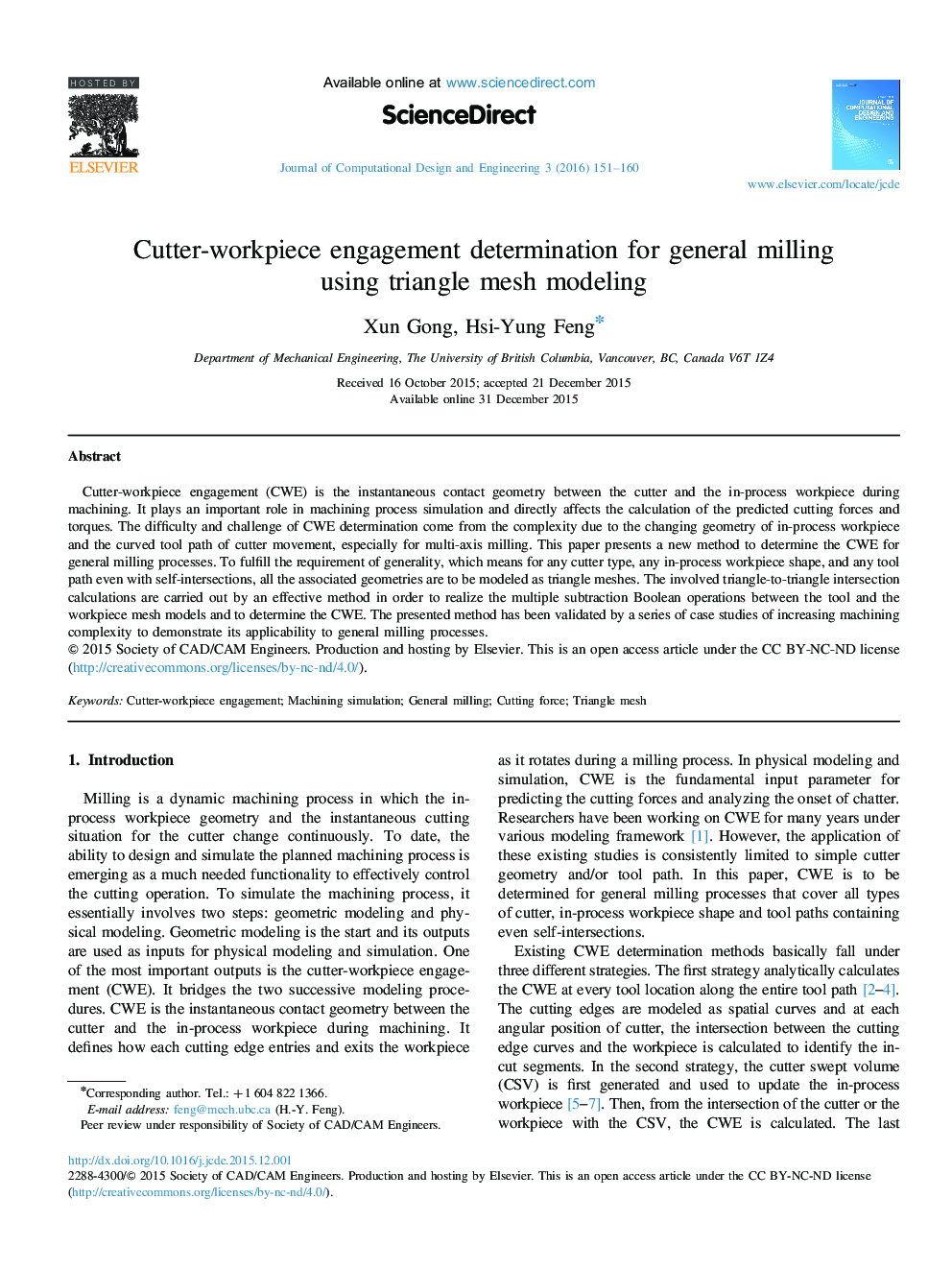| Article ID | Journal | Published Year | Pages | File Type |
|---|---|---|---|---|
| 442841 | Journal of Computational Design and Engineering | 2016 | 10 Pages |
•A new method to determine cutter-workpiece engagement geometry in milling.•Applicable to general milling processes: all cutter types, in-process workpiece shapes and tool paths containing even self-intersections.•Results validated by a series of case studies of increasing machining complexity.
Cutter-workpiece engagement (CWE) is the instantaneous contact geometry between the cutter and the in-process workpiece during machining. It plays an important role in machining process simulation and directly affects the calculation of the predicted cutting forces and torques. The difficulty and challenge of CWE determination come from the complexity due to the changing geometry of in-process workpiece and the curved tool path of cutter movement, especially for multi-axis milling. This paper presents a new method to determine the CWE for general milling processes. To fulfill the requirement of generality, which means for any cutter type, any in-process workpiece shape, and any tool path even with self-intersections, all the associated geometries are to be modeled as triangle meshes. The involved triangle-to-triangle intersection calculations are carried out by an effective method in order to realize the multiple subtraction Boolean operations between the tool and the workpiece mesh models and to determine the CWE. The presented method has been validated by a series of case studies of increasing machining complexity to demonstrate its applicability to general milling processes.
